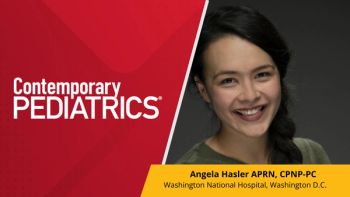
CDC estimates nirsevimab is 90% effective against RSV-associated hospitalizations
Though a small number of infants received nirsevimab in the analysis, results support existing nirsevimab recommendations to prevent serious RSV disease in infants.
The effectiveness of nirsevimab (Beyfortus; Sanofi and AstraZeneca) against respiratory syncytial virus (RSV)-associated hospitalizations is estimated to be 90% in infants during their first RSV season, according to new data from the Centers for Disease Control and Prevention (CDC).
A March 7, 2024 publication of the CDC's Morbidity and Mortality Weekly Report (MMWR) references that RSV is the leading cause of hospitalization in US infants, putting between 50,000 to 80,000 children aged 5 years and younger in the hospital annually.
Ahead of the typical RSV season, the long-acting monoclonal antibody was
In the same month, the American Academy of Pediatrics (AAP) also
In the following months, amid shortages and high demand for nirsevimab, the CDC recommended the antibody be
The current analysis of nirsevimab is the first estimate in the United States for post-introduction effectiveness for infants in their first RSV season, stated the CDC.
Data was collected using the New Vaccine Surveillance Network (NVSN), a platform for acute respiratory illness (ARI) in infants, children, and adolescents under 18 years of age. The system monitors pediatric respiratory viruses across 7 US pediatric academic medical centers.
Received through parent reports, the receipt of nirsevimab was verified through state immunization information systems, birth hospitals, or primary care records.
Eligible infants had to be younger than 8 months of age as of October 1, 2023, or born after that date. They had to be hospitalized with ARI during October 1, 2023 through February 29, 2024, had verified nirsevimab status, reported gestational age at birth, and had to have medical record review to assess for underlying conditions, according to the MMWR.
Effectiveness against RSV-associated hospitalization was estimated using a test-negative, case-control study design, with case-patients being those who received a positive RSV test result and control patients being infants with a negative result.
Effectiveness was calculated as (1− adjusted odds ratio) × 100%.
In all, 699 infants at 4 sites were included in the study, with 407 case-patients and 292 control patients.
Nirsevimab was more frequent in infants with high-risk medical conditions compared to those without (46% vs 6% [P < 0.001]). A median of 45 days was observed as time since receipt of nirsevimab to ARI symptom onset, ranging from 7 to 127 days (IQR = 19-76 days).
In all, 6 case-patients (1%) and 53 (18%) control patients received nirsevimab, with effectiveness at 90% against RSV-associated hospitalization.
Likely because of the delayed availability in the first introduction season of nirsevimab, only a small proportion of hospitalized infants with ARI received nirsevimab, a limitation of the study.
Overall, data revealed in the study supports existing recommendations to prevent severe RSV disease with nirsevimab for infants in their first RSV season, as a single dose was highly effective.
Reference:
Early estimate of nirsevimab effectiveness for prevention of respiratory syncytial virus–associated hospitalization among infants entering their first respiratory syncytial virus season — new vaccine surveillance network, October 2023–February 2024. Morbidity and Mortality Weekly Report. March 7, 2024. Accessed March 7, 2024. https://www.cdc.gov/mmwr/volumes/73/wr/mm7309a4.htm?s_cid=mm7309a4_e&ACSTrackingID=USCDC_921-DM124001&ACSTrackingLabel=This%20Week%20in%20MMWR%3A%20Vol.%2073%2C%20March%207%2C%202024&deliveryName=USCDC_921-DM124001
Newsletter
Access practical, evidence-based guidance to support better care for our youngest patients. Join our email list for the latest clinical updates.









